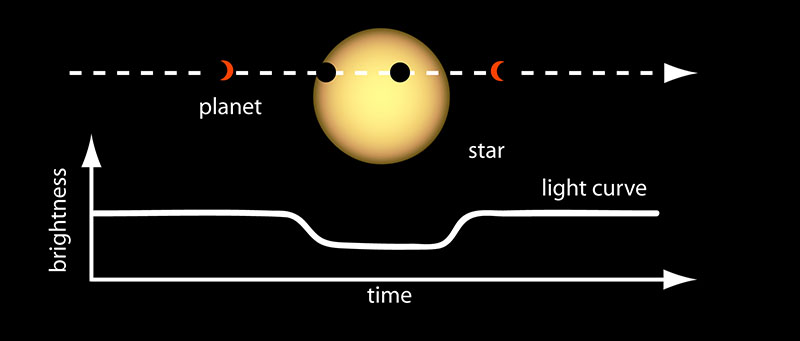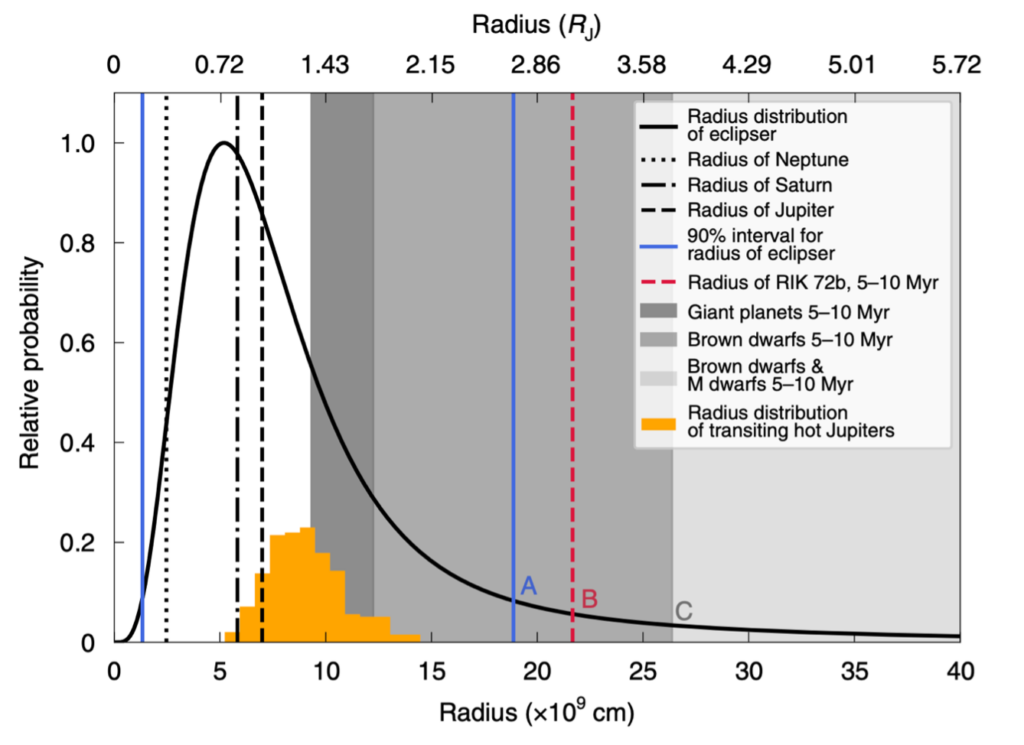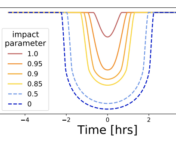Title: A possible planet candidate in an external galaxy detected through X-ray transit
Authors: Rosanne Di Stefano, Julia Berndtsson, Ryan Urquhart, Roberto Soria, Vinay L. Kashyap, Theron W. Carmichael & Nia Imara
First Author’s Institution: Institute for Theory and Computation, Center for Astrophysics ∣ Harvard & Smithsonian, Cambridge, MA, USA
Status: Published in Nature Astronomy [closed access]
At the first breath of morning in a faraway galaxy, you look towards the sky. But instead of the Sun, you see two celestial bodies rising. One resembles our Sun, but is distorted as a stream of stellar material falls from it and is drawn into a ring around the other. This is what a “sunrise” might look like from M51-ULS-1b, possibly the first planet found in a galaxy beyond our own.
Plenty of exoplanets have been discovered in our own galaxy—5640 to date. Based on our understanding of planet formation, there’s no reason to doubt the existence of planets in other galaxies, but detecting them is a daunting task. In the Milky Way exoplanets are often detected through transit light curves, the observed slight dimming of a star as one of its planets passes in front of it. In this situation, the star is being eclipsed by the planet, so the planet is sometimes called the “eclipser.” Unfortunately, this method isn’t directly applicable to the detection of planets in distant galaxies. Because they are so far away, the light of an individual star can’t be distinguished from the light of stars around it, leaving the transit light curves extremely difficult to disentangle.

The X-ray Connection
Luckily for the authors of today’s paper, the transit method appears to be successful for detecting planets in other galaxies when applied only to X-rays from X-ray binaries (XRBs). XRBs are made up of a “dead” remnant of a massive star, either a black hole or neutron star, which is gravitationally tied to a still “living” star. As the two orbit each other, the much denser remnant pulls and heats material from the star, such that the system blasts out X-rays. XRBs are less common than stars, so it’s easier to distinguish them from each other. This means that no light curve disentangling is needed, the dimmed X-ray emission as a planet passes in front of an XRB can be individually detected!
With this technique in mind, the authors turned to archived Chandra X-ray light curves to search for transits. Of the over 2500 light curves they examined, one showed clear evidence of a transiting planet. Observed on September 20th, 2012 in a spiral arm of the Whirlpool galaxy, XRB M51-ULS-1 exhibits a telltale dip in X-ray emission for around 3 hours before returning to its regular emission levels. Modeling the light expected to be blocked by an eclipser further confirmed its planet-like nature, and allowed the authors to estimate that the orbit’s most probable radius is about the size of Saturn’s orbit around the Sun.

Proof of a Planet
The blaring question left to be answered is: How do we know it’s a planet? XRB luminosities do fluctuate, accompanying changes in X-ray colors. However, the X-ray colors are constant for the duration of the transit, ruling out intrinsic variation of the binary as its cause. The authors also explored the possibility that the eclipser was another type of object, like a star. Looking at the size of the object can help to determine its likely orbital radius. As shown in Figure 3, the most probable radius of this eclipser reveals that it is either a planet or a brown dwarf.

Statistically, such a small object is far more likely to be a planet than a brown dwarf. Additionally, a planet is more likely to exist in an orbit around an XRB, as planets form simultaneously with stellar systems and could have survived the death of the remnant star due to its wide orbit.
If the authors are correct, this discovery of a planet in a galaxy other than our own opens a floodgate of opportunities. We could use the same techniques to discover more planets in distant galaxies, expand our understanding of planetary environments, and add to the toolbox of the search for extraterrestrial life. So much we can learn from an inconspicuous planet 28 million light-years away from us!
Astrobite edited by Diana Solano-Oropeza and Jessie Thwaites
Featured image credit: Annelia Anderson




